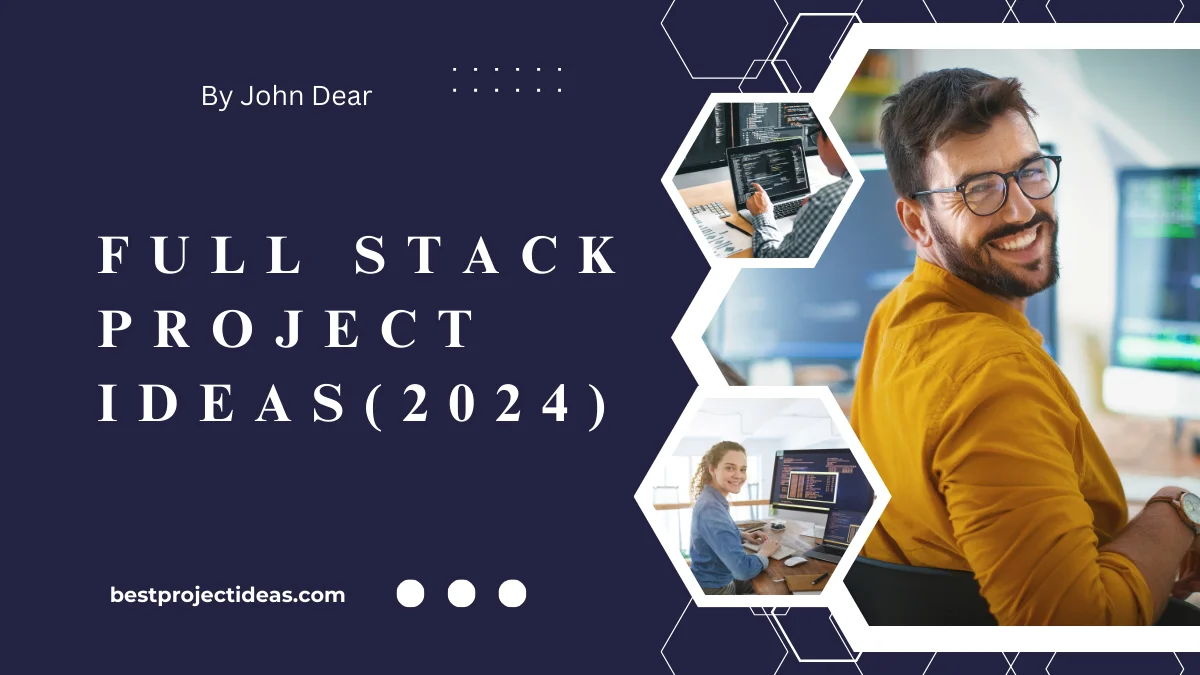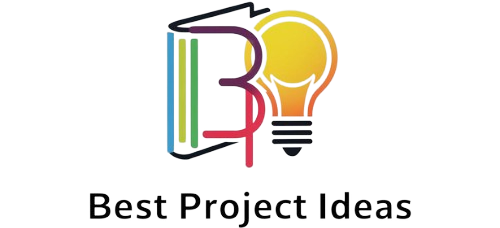
Full stack project ideas are like building the perfect treehouse – you work on every part, from the bottom to the top! These projects help students learn all the skills needed to make working software. Imagine creating your website or app from scratch!
Full stack means you’ll work on both the front end (what users see) and the back end (what makes it work behind the scenes).
While doing this, students learn coding, design, and problem-solving. Full stack project ideas are a fun challenge that gets students ready for tech jobs. It’s a chance to make your digital dreams come true!
How To Develop A Full-Stack Project?
Steps to Develop a Full-Stack Project
1. Define the Project Scope:
Start by clearly saying what your project will do, who will use it, and what technologies you will use.
2. Set up the Development Environment:
Install and set up the tools, frameworks, and databases you need for both the front-end and back-end parts of your project.
3. Design the User Interface:
Make a user-friendly and nice-looking interface using HTML, CSS, and JavaScript frameworks like React, Angular, or Vue.js.
4. Develop the Back-end:
Build the server-side logic using a programming language like Node.js, Python, or Java and connect it to a database to store and get data.
5. Integrate the Front-end and Back-end:
Connect the user interface with the back-end APIs to make sure data and functions flow smoothly.
6. Implement Authentication and Authorization:
Add secure ways to check and control who can use your app and what they can do.
7. Test and Debug:
Test your app thoroughly, fix any problems, and make sure everything works as it should.
8. Deploy and Maintain:
Put your full-stack app on a hosting platform and set up processes to monitor and keep it running smoothly.
Full Stack Project Ideas For Final Year
Here are 15+ unique full stack project ideas for final year students
Full Stack Project Ideas For Beginner Level:
1. Personal Portfolio Website:
Create a website to show your skills, projects, and resume.
Steps to execute this project: Choose a web development framework like React, Angular, or Vue.js. Design the layout and create the frontend and backend.
Benefits: It helps you make a professional online presence and shows your web development skills.
Tools used: HTML, CSS, JavaScript, a web development framework, and a hosting platform.
2. Recipe Sharing App:
Build a web app where people can share, rate, and save their favourite recipes.
Steps to execute this project: Design the user interface, add the ability to create, read, update, and delete recipes, and connect a database to store the recipe data.
Benefits: Helps users find new recipes, share their cooking, and connect with other food lovers.
Tools used: HTML, CSS, JavaScript, a web framework, and a database like MongoDB, MySQL, or Firebase.
3. Todo List Application:
Create a simple web app where users can manage tasks and track progress.
Steps to execute this project: Design a user-friendly interface, add the ability to create, read, update, and delete tasks, and use a backend service to save the data.
Benefits: Helps users stay organised and get things done.
Tools used: HTML, CSS, JavaScript, a web framework, and a backend service like Node.js, Django, or Flask.
4. Weather Forecast App:
Make a web app that gives real-time weather information for a user’s location or any chosen place.
Steps to execute this project: Connect with a weather API, design a simple user interface, and show the weather data.
Benefits: It lets users quickly check the weather and plan their day.
Tools used: HTML, CSS, JavaScript, a web framework, and a weather API like OpenWeatherMap, Dark Sky, or AccuWeather.
5. Blog Website:
Build a website where users can write, publish, and manage blog posts.
Steps to execute this project: Create a content management system (CMS) with the ability to create, read, update, and delete posts, add user authentication, and design an attractive layout.
Benefits: Helps users share their thoughts and ideas with a bigger audience.
Tools used: HTML, CSS, JavaScript, a web framework, and a CMS like WordPress, Drupal, or Joomla.
Full Stack Project Ideas For Intermediate Level:
6. E-commerce Website:
Create a platform where users can browse products, add items to a cart, and buy them.
Steps to execute this project: Design the product catalogue, add shopping cart and checkout features, connect a payment gateway, and manage inventory and orders.
Benefits: Provides a secure and easy shopping experience for users and helps businesses reach more customers.
Tools used: HTML, CSS, JavaScript, a web framework, a database, and a payment gateway like Stripe, PayPal, or Braintree.
7. Social Media Platform:
Build a social media site where users can connect, share content, and interact.
Steps to execute this project: Add user profiles, news feeds, posting, sharing, and real-time messaging features.
Benefits: It lets users build relationships and stay connected with others.
Tools used: HTML, CSS, JavaScript, a web framework, a database, and real-time communication tools like WebSockets or Socket.
8. Real-time Chat Application:
Create a web-based chat app for real-time conversations.
Steps to execute this project: Design a user interface for chatting, add real-time messaging, and include features like group chats and file sharing.
Benefits: It lets users talk and work together in real-time, no matter where they are.
Tools used: HTML, CSS, JavaScript, a web framework, and real-time communication tools like WebSockets or Socket. IO.
9. Event Management System:
Build a web app to help users plan and manage events like conferences or parties.
Steps to execute this project: Design event registration and ticketing features, add event scheduling and management tools, and connect a payment gateway.
Benefits: It makes it easier for both organisers and attendees to plan and join events.
Tools used: HTML, CSS, JavaScript, a web framework, a database, and a payment gateway.
10. Online Learning Platform:
Create a web platform where teachers can offer online courses, and students can sign up and learn.
Steps to execute this project: Add features for creating and managing courses, design a user-friendly learning interface, and connect payment and certificate tools.
Benefits: Gives learners an easy way to gain new skills and helps teachers reach more students.
Tools used: HTML, CSS, JavaScript, a web framework, a database, and a learning management system like Moodle, Canvas, or Blackboard.
Full Stack Project Ideas For Expert Level:
11. Cryptocurrency Trading Platform:
Create a web platform for users to trade cryptocurrencies, watch market trends, and manage their portfolios.
Steps to execute this project: Connect with cryptocurrency exchange APIs, design a trading interface, add features like different order types and portfolio management, and ensure secure user authentication and data storage.
Benefits: Gives users a complete platform to join the cryptocurrency market and manage their digital assets.
Tools used: HTML, CSS, JavaScript, a web framework, a database, and cryptocurrency exchange APIs.
12. Autonomous Vehicle Simulation:
Create a web-based simulation where users can design, test, and see how autonomous vehicles work.
Steps to execute this project: Add physics-based vehicle dynamics, design a 3D environment, connect AI-driven autonomous driving algorithms, and provide an easy-to-use interface for creating and analysing scenarios.
Benefits: Helps researchers and engineers explore autonomous vehicle technology in a safe virtual space.
Tools used: HTML, CSS, JavaScript, a web framework, a 3D rendering library like Three.js or WebGL, and machine learning libraries like TensorFlow.js or PyTorch.
13. Decentralised File Storage System:
Build a web app that uses blockchain technology for secure and decentralised file storage.
Steps to execute this project: Connect with a blockchain platform like Ethereum or Hyperledger, design a user interface for uploading and downloading files, add smart contracts for access control and data integrity, and ensure data confidentiality and availability.
Benefits: Provides users with a privacy-focused way to store and share files without relying on central service providers.
Tools used: HTML, CSS, JavaScript, a web framework, a blockchain platform, and decentralised storage like IPFS or Storj.
14. Intelligent Recommendation System:
Create a web app that uses machine learning to offer personalised recommendations to users, like products or content.
Steps to execute this project: Collect and clean user data, train a recommendation model with machine learning algorithms, design a user interface to show recommendations, and deploy the system on a web platform.
Benefits: Improves user experience by giving tailored recommendations, boosts engagement, and shows skills in web development and machine learning.
Tools used: HTML, CSS, JavaScript, a web framework, a machine learning library like TensorFlow.js or scikit-learn, and a database for user and item data.
15. Augmented Reality (AR) Interior Design App:
Build a web app that lets users see and design their living spaces using augmented reality.
Steps to execute this project: Connect with an AR development platform like A-Frame or ARCore, design a user interface for room modelling and furniture placement, add cost estimation and purchase features, and ensure a smooth AR experience.
Benefits: Helps users plan and realistically see their interior design projects.
Tools used: HTML, CSS, JavaScript, a web framework, an AR development platform, and a database for furniture and room data.
16. Distributed Ledger-based Supply Chain Tracking:
Create a web app using blockchain to make a transparent and tamper-proof supply chain tracking system.
Steps to execute this project: Connect with a blockchain platform like Hyperledger Fabric or Ethereum, design a user interface for tracking shipments and verifying product origins, add smart contracts to automate supply chain processes, and ensure data security and integrity.
Benefits: Improves supply chain transparency and traceability of products and helps verify the authenticity of goods.
Tools used: HTML, CSS, JavaScript, a web framework, a blockchain platform, and supply chain data sources.
17. Predictive Maintenance Platform:
Create a web platform that uses machine learning and IoT data to predict and prevent equipment failures.
Steps to execute this project: Collect and clean sensor data from connected devices, train predictive maintenance models with machine learning algorithms, design a user interface for monitoring equipment health and scheduling maintenance, and connect with enterprise resource planning (ERP) systems.
Benefits: Reduces unplanned downtime, optimises maintenance schedules, and improves equipment reliability.
Tools used: HTML, CSS, JavaScript, a web framework, machine learning libraries like TensorFlow.js or scikit-learn, and IoT data sources.
18. Intelligent Recruitment System:
Build a web app that uses natural language processing and machine learning to simplify the recruitment process and match candidates with the right job opportunities.
Steps to execute this project: Add resume parsing and skills extraction, design a user-friendly job search and application system, train models for job-candidate matching, and connect with applicant tracking systems.
Benefits: It makes the recruitment process faster and helps find the best-fit candidates, providing job seekers with personalised job recommendations.
Tools used: HTML, CSS, JavaScript, a web framework, natural language processing libraries like spaCy or NLTK, and machine learning algorithms.
19. Smart City Dashboard:
Create a web-based dashboard that integrates and shows data from various smart city infrastructure and services like traffic monitoring, waste management, and energy use.
Steps to execute this project: Collect and combine data from multiple IoT sensors and city systems, design interactive data visualisations and dashboards, add features for real-time monitoring and predictive analytics, and provide a user-friendly interface for city administrators and citizens.
Benefits: Helps city officials make data-driven decisions, improves the efficiency of urban services, and empowers citizens to engage with their local government.
Tools used: HTML, CSS, JavaScript, a web framework, data visualisation libraries like D3.js or Plotly.js, and IoT data sources.
20. Collaborative Virtual Reality (VR) Platform:
Build a web platform that lets users join shared virtual reality experiences like virtual meetings, training sessions, or collaborative design sessions.
Steps to execute this project: Connect with a VR development framework like A-Frame or Three.js, design a user interface for creating and interacting in virtual environments, add real-time communication and collaboration features, and ensure a smooth cross-device experience.
Benefits: Provides an engaging way for remote teams to collaborate, train, and join shared experiences, regardless of location.
Tools used: HTML, CSS, JavaScript, a web framework, a VR development framework, and real-time communication tools like WebSockets or WebRTC.
Sources To Find The Full-Stack Project Ideas: Key Considerations
Key Considerations for Finding Full-Stack Project Sources
1. Online Tutorials and Courses:
Websites like Udemy, Coursera, and Pluralsight have lots of full-stack development tutorials and courses that give step-by-step help on building real-world projects.
2. Open-Source Repositories:
Websites like GitHub, GitLab, and Bitbucket host many open-source full-stack project repositories that you can look at, learn from, and even contribute to.
3. Developer Communities:
Join online communities like Reddit’s /r/webdev, Stack Overflow, and other tech-specific forums to find project ideas, ask questions, and connect with experienced developers.
4. Freelance Platforms:
Websites like Upwork, Fiverr, and Freelancer.com often have clients posting full-stack project jobs that you can apply for and gain experience.
5. Personal Portfolio Projects:
Think about building your full-stack projects based on what you like or ideas you have. These can show off your skills and be added to your portfolio.
6. Hackathons and Coding Challenges:
Join hackathons or coding challenges organised by tech companies or communities. These events give you a chance to work on full-stack projects with others.
7. University or Bootcamp Projects:
If you’re a student or in a coding bootcamp, make the most of project-based learning opportunities offered by your school or program.
8. Collaborating with Friends or Peers:
Work together with friends or peers who are also interested in full-stack development. Building projects together helps you learn from each other.
Remember: Start with small projects, keep building your skills, and expand your experience in full-stack development.
Also Read: 121+ Remarkable Biome Project Ideas For Students (2024)
Final Words
Full stack project ideas help students gain a wide range of tech skills that will be useful in the future. By working on these projects, students learn the whole process of building software, from design to coding.
This hands-on experience helps them develop critical thinking, problem-solving, and teamwork skills. As they work on their projects, students also learn about managing projects, testing, and launching them.
These essential skills are valuable in the tech world and can lead to many exciting careers. Full stack projects allow students to turn their digital ideas into reality, getting them ready to be the problem-solvers of tomorrow.

